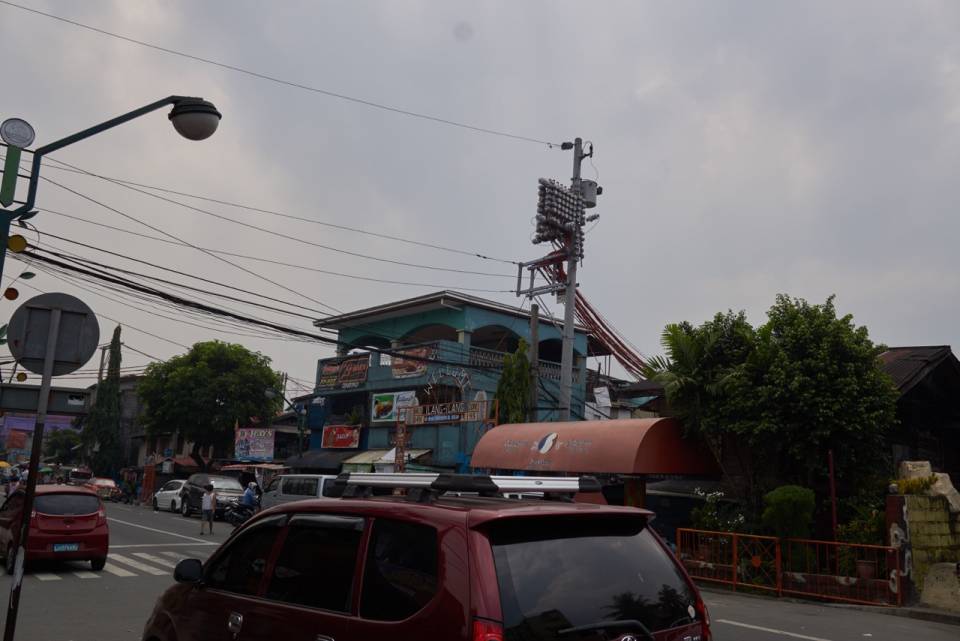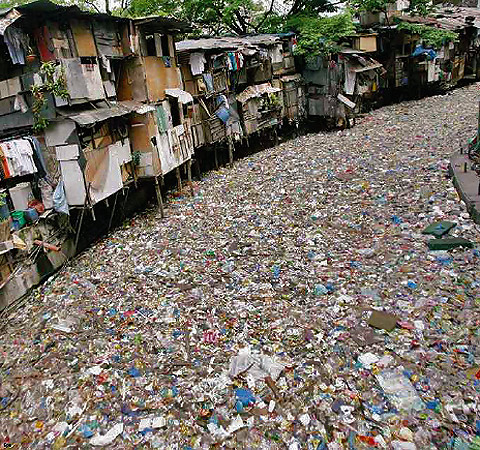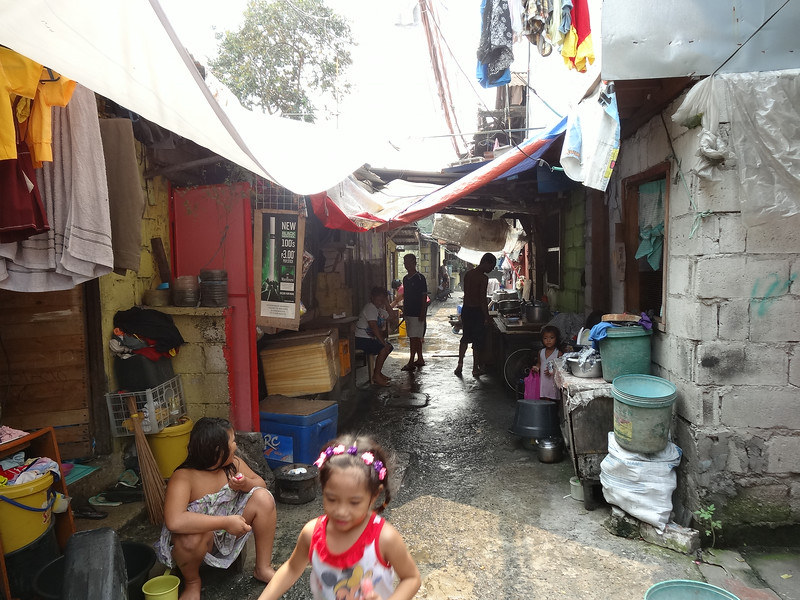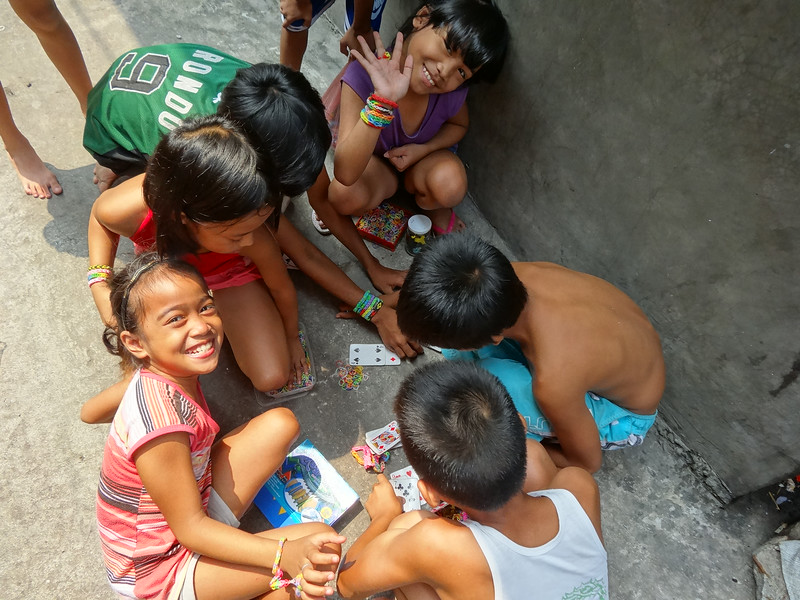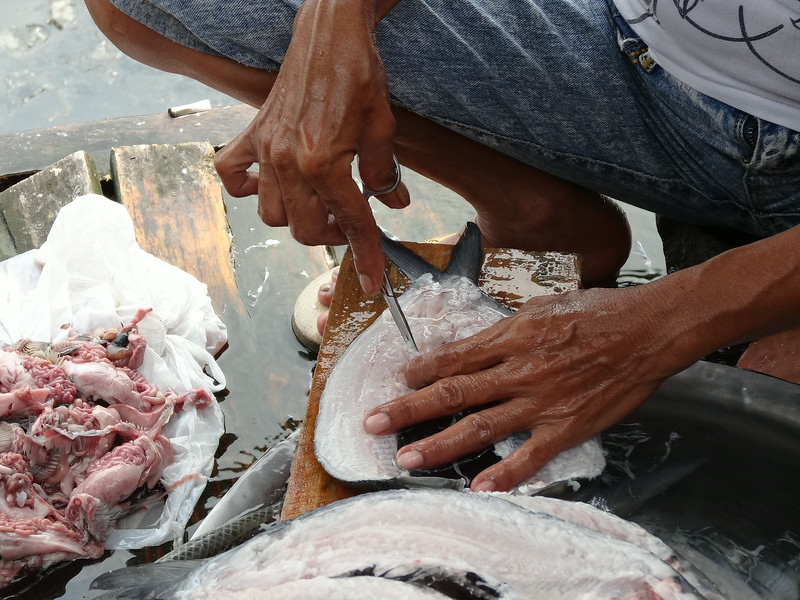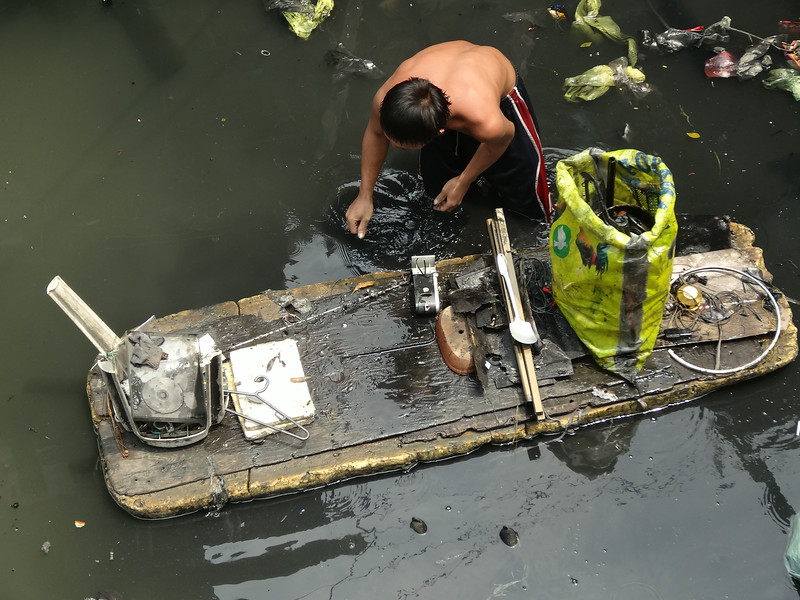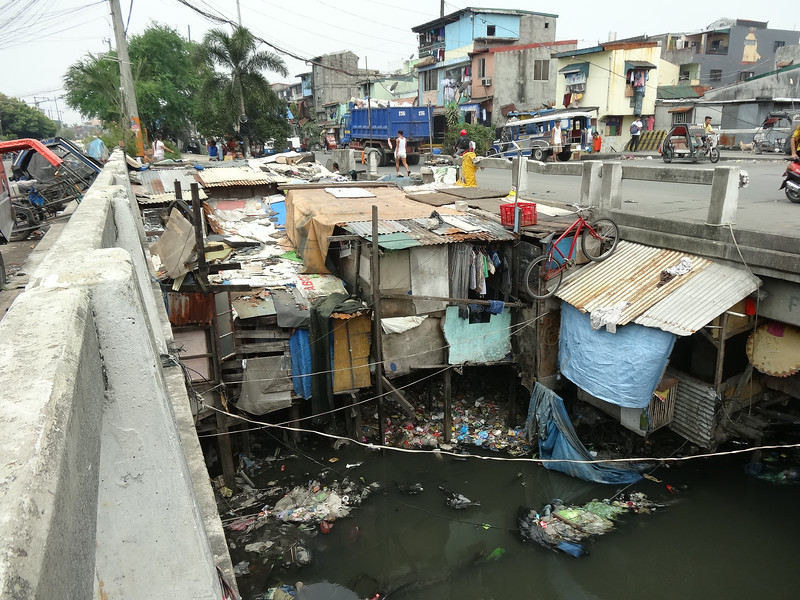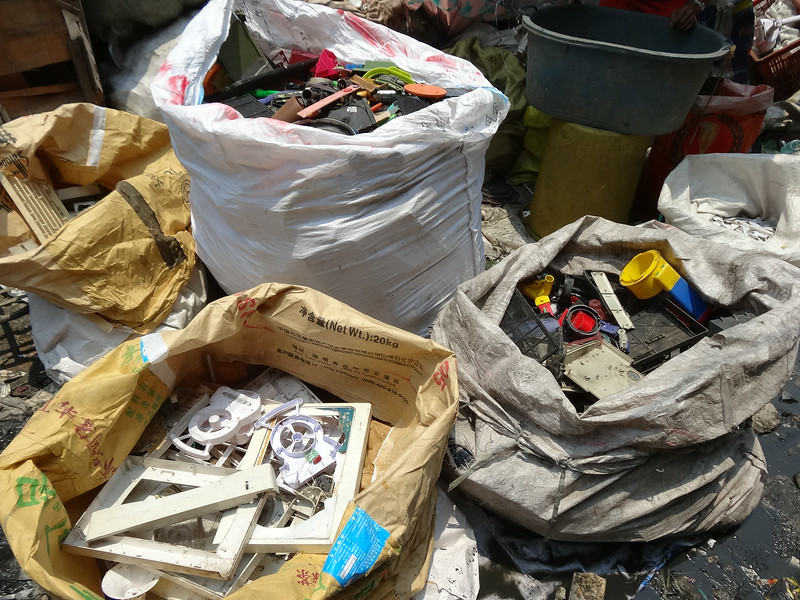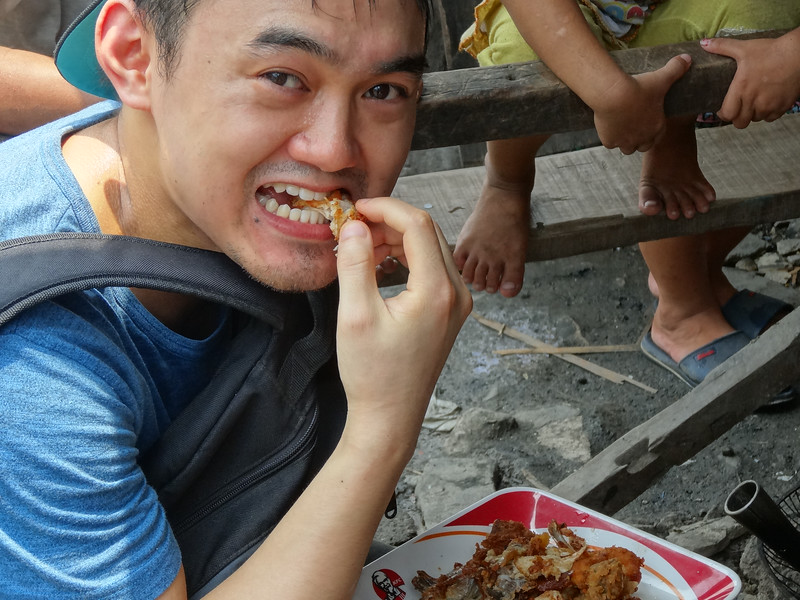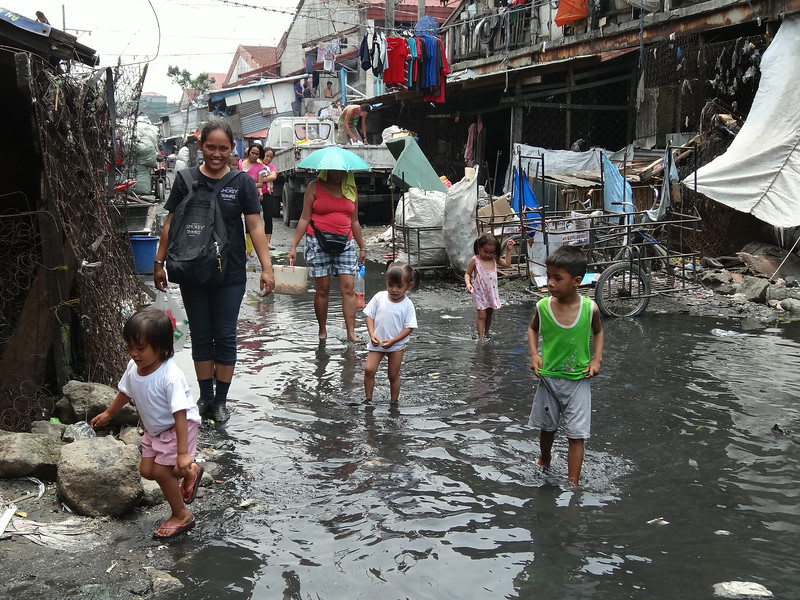Inside Manila: A Walk Through The Slums Of The Philippine Capital (P1)
http://www.brenontheroad.com/inside-manila-look-inside-slums-philippines-capital/
By Bren | October 20, 2014 | 19 Comments
The mud is black.
There’s trash everywhere.
And the smell is…well…the smell is like a mixture of wet clothes and rotten wood. It’s not necessarily unpleasant, but definitely distinct.
I look around at the kids running through the alleys, the women selling ‘useful trash’ such as plastic bags and recycled paper, and the elderly lounging peacefully on their balconies, looking out over it all.
These are Manila’s slums, where, without any provided housing, the homeless have been forced to squat. It’s a very different place to the Manila I’m used to.
Xuyên qua khu ổ chuột ở Manila
By Bren | 20 Tháng Mười năm 2014
Bùn đen kịt, rác khắp mọi nơi.
Và mùi, … mùi giống mùi của giẻ ướt và gỗ thối trộn lẫn với nhau. Không khó chịu lắm, nhưng rất khác biệt.
Tôi nhìn những đứa trẻ chơi trong các con hẻm, những phụ nữ bán túi nhựa và giấy vụn để tái chế, và người già thơ thẩn trên ban công nhìn lơ đễnh ra bên ngoài.
Đây là những khu nhà ổ chuột ở Manila, nơi mà những người vô gia cư đã bắt buộc phải “nhảy dù” chiếm dụng đất bất hợp pháp. Nơi này thật khác biệt với những khu khác ở Manila.
My day in the slums starts early. I meet Remy, my guide from
Smokey Tours, at 9am at Jollibee, and we jump on a jeepney out to the slums in Barangay 105.
The first slum is actually tidier than I expect. They have rooms with beds and tables, some even televisions, the alleys are paved and running water is available. Life is not easy here by any means, but at least basic human needs of food, shelter and clothing seem to be met, if only barely.
Tôi đến khu ổ chuột từ sớm. Tôi hẹn gặp Remy lúc 9 giờ sáng tại Jollibee. Remy là hướng dẫn viên của Smokey Tours. Từ điểm hẹn, chúng tôi bắt jeepney đến khu nhà ổ chuột ở Tiểu khu 105.
Khu đầu tiên tôi đến ngăn nắp hơn tôi nghĩ. Các căn hộ có giường, bàn ghế. Thậm chí có gia đình có cả tivi. Đường đi lối lại được trải nhựa và có nước máy để dùng. Cuộc sống ở đây tuy không dễ dàng, nhưng ít nhất các nhu cầu cơ bản nhất của con người được đáp ứng.
In many people’s imagination, slums are lifeless places full of sick, starving people, fighting to survive, but surprisingly it’s quite the opposite here. People are up and about early, getting on with their day, cooking, washing, cleaning, working. It’s actually a rather lively place.
As we walk through the alleys, we pass an old man cooking something on charcoal made from coconuts. I am not sure how he does it, but it works. Clearly, resourcefulness is key to survival here.
Mọi người thường nghĩ rằng trong khu ổ chuột toàn người ốm yếu và đói ăn, sống chật vật. Tuy nhiên, cuộc sống trong khu này lại rất sống động: cư dân dậy sớm, nấu ăn, giặt giũ, vệ sinh, làm việc.
Trên đường đi, tôi nhìn một ông già dùng than làm từ quả dừa để nấu ăn. Rất sáng tạo. Mọi người phải nghĩ ra đủ mọi cách để tồn tại ở nơi này.
Huddled in one of the corners, we come to a group of kids gambling for rubberbands. It’s obviously popular, as I’ve seen it getting played in a few different corners of the slum now. They laugh and scream wildly, having the time of their lives. It is always refreshing to see the innocence on a child’s face, happy and oblivious to the complicated world around them. I think about how, and why, I was given such luck in the ovarian lottery, born into a two-storey home in upper-middle class New Zealand. Compared to these kids, I grew up in a fairytale, yet their smiles are brighter than ever.
Túm tụm trong một góc, một nhóm trẻ đánh bài ăn chun. Bài bạc rất phổ biến trong khu ổ chuột. Bọn nhóc cười và la hét dữ dội, như quên hết sự đời, quên hết thế giới phức tạp xung quanh chúng. Nụ cười của chúng, có lẽ, còn hạnh phúc hơn tôi, mặc dù tôi sinh ra như trong câu chuyện cổ tích nếu so sánh với chúng.
Eventually we get to the river Estero de Vitas, which lines the slum.
By the riverside, I spot two ladies working on a few piles of fish. I walk over to take a closer look, and they glance up and smile at me. The fish they are processing is bangus, a Filipino favourite, and they work through them at light speed; one does the cleaning and gutting, the other bones the fillets. Soon it becomes clear how they do it so fast – they’ve been doing it for 40 years.
Cuối cùng chúng tôi đến bờ sông Estero de Vitas, ngăn cách khu ổ chuột với các khu khác.
Bên bờ sông, tôi nhìn thấy hai phụ nữ đang làm cá. Thấy tôi, họ ngước lên và mỉm cười. Cá mà họ đang chế biến là bangus, loại cá rất được ưa chuộng ở Philippines. Họ rửa cá, moi ruột, lọc xương cực nhanh. Đã 40 năm họ làm công việc này.
It is jobs like these that keeps the households fed – most fish are sold, some are kept for food, and the income gives them a means to keep on surviving.
As we come to the end of the river, Remy points out another type of slum-dweller underneath the main bridge. Here, homes hang over the water, made from tarpaulin and scrap wood, seemingly hanging in mid-air. I stare at them for several minutes, and still can’t figure out how they’ve managed to build them.
Chỉ một phần cá nhỏ được giữ lại cho gia đình dùng còn đa phần bán đi. Đó là thu nhập ít ỏi giúp họ sống qua ngày.
Tiếp tục con đường đến cuối sông, lại là khu ổ chuột dưới gầm cầu. Nhà cửa làm từ vải bạt và gỗ phế liệu, dường như treo ở giữa không trung, trên mặt nước. Tôi nghĩ mãi không ra, làm cách nào mà họ đã xây được chúng.
These homes are far more primitive than the ones I’ve just seen. The men who live here work mostly as scavengers, sorting through the river trash for useful bits of plastic, metal and other materials. This is then sold to junk or recycling shops, allowing these people to make a living.
Những căn nhà này thật hoang sơ. Cư dân chủ yếu là những người nhặt rác trên sông, sau đó phân loại rác rồi bán lại cho cửa hàng tái chế, kiếm những đồng tiền ít ỏi, sống cho qua ngày đoạn tháng.
As we cross over to get a closer look, a couple of girls living there come to show us around. We walk through the houses above the river, of which there are many, all made of recycled wood and other scrap materials. I feel like at any moment it’ll collapse and we’ll go plummeting into the water.
I look inside some of the homes and see how tiny they are. Somehow, families of 7 or more manage to live together in a shack no bigger than a standard western bathroom.
Lại gần, những ngôi nhà treo trên mặt sông phần lớn làm bằng gỗ tái chế và phế liệu. Tôi có cảm giác nó có thể sụp đổ bất kỳ lúc nào và tôi sẽ rơi tõm xuống dòng sông đen ngòm.
Tôi nhìn vào bên trong một số ngôi nhà. Không thể tưởng tượng nổi làm sao 7 người có thể sống trong một diện tích tin hin, hẹp hơn một phòng tắm được.
At this point, I am not quite sure what to think. The conditions just seem so unlivable to a first-world child like myself, almost on par with some of the places in rural Africa. However, at least in those places there is land to farm and build proper housing. Inner city poverty is a different beast. There is no land, no toilets, no electricity, and to make things worse, typhoons destroy the slum each year, after which the dwellers are left to rebuild. With the comforts of the city so close by, it is hard to understand how so many people are left to live like this.
Tôi không biết tôi đang suy nghĩ gì. Đối với một người sinh ra ở một nước phát triển như tôi thì các điều kiện như thế này không thể sống nổi. Nó gần giống như vùng nông thôn ở châu Phi vậy. Tuy nhiên, ở nông thôn, còn có đất để trồng trọt và nhà cửa rộng rãi. Còn ở thành phố, không đất, không nhà vệ sinh, không điện. Lại còn các cơn bão thường xuyên đổ bộ, phá hủy nhà cửa hàng năm nữa.






 . Số điện thì được đọc bằng ống nhòm. Em rất ấn tượng với cảnh cái cột cao treo đầy công tơ trên đó.
. Số điện thì được đọc bằng ống nhòm. Em rất ấn tượng với cảnh cái cột cao treo đầy công tơ trên đó.